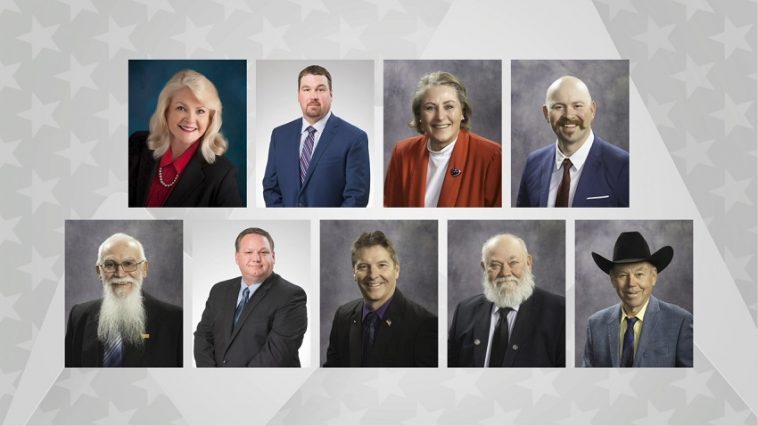Missoula, MT — Tensions within the Montana State Senate reached a boiling point during the 2025 legislative session, as nine Republican senators defied their party’s leadership on multiple key votes. The rift, which began on the very first day of the session, evolved into a broader clash that lasted throughout the 85-day session.
The controversy began with a single, yet significant vote on the first day, where these nine Republicans joined Democrats in changing the temporary rules that governed the Senate’s operations. This move marked the beginning of a recurring theme throughout the session: a group of Republicans repeatedly siding with Democrats to oppose GOP leadership on various procedural motions and legislation.
The group, which came to be known as the “nine,” included Senators Wendy McKamey, Josh Kassmier, Jason Ellsworth, Butch Gillespie, Gregg Hunter, Gayle Lammers, Denley Loge, Russ Tempel, and Shelley Vance. Their actions over the course of the session raised questions about internal GOP unity and set the stage for a broader political divide within the state Senate.
Frustration Over Committee Assignments
One of the key factors behind the split appeared to be dissatisfaction with the Senate’s committee assignments. Several of the dissenting senators expressed frustration at being placed on less influential committees, which they felt marginalized their ability to effect meaningful change. Senators like Josh Kassmier, R-Fort Benton, pointed to their assignment to the newly created Executive Review Committee, a body intended to handle legislation from state agencies. While some members questioned the necessity of the committee, Kassmier and others believed the assignments were a strategic move to sideline them.
“I think that this kind of got us off to a rough start,” Kassmier told MTN News. “When we actually changed the rules and made sure everybody was placed on committees that was fairly based on experience, knowledge, it was really important. And to feel like we were isolated early on didn’t help the situation.”
Policy Differences Fuel the Divide
In addition to frustrations over committee placements, policy differences further fueled the rift. Senator Wendy McKamey, R-Great Falls, emerged as a vocal critic of the lack of support for Governor Greg Gianforte’s policy agenda within the Republican ranks. McKamey, while not closely aligned with the governor, expressed concerns over what she saw as Republican opposition to Gianforte’s goals.
“I did not work closely with the governor at all, but what I really felt was that the Republican caucus should support the Republican governor,” McKamey explained. “When I saw the lack of support, and even opposition to our governor, that was an issue for me. And I wasn’t opposed to taking a stand stating that.”
This sentiment resonated with other members of the group, who believed that their own party’s leadership was not fully supporting the governor’s agenda. As a result, the nine senators began aligning with Democrats on various votes, including those that reshuffled committee assignments and allowed certain bills to bypass committee blockages, known as the “blast” procedure.
Impact on GOP Unity
The actions of the nine senators drew significant attention, both from within the Republican Party and from the public. Their willingness to break ranks with GOP leadership sparked debates over the future direction of the party in Montana, with some questioning whether the divide would have long-term implications for the state’s political landscape.
While the nine senators remained firm in their positions, Senate Republican leadership, including Senate President Jason Ellsworth, R-Hamilton, largely dismissed their actions as a result of personal grievances and policy disagreements. However, the ongoing tensions raised doubts about the party’s ability to maintain unity as the 2026 election cycle approaches.
Looking Ahead
As the 2025 legislative session came to a close, the rift within the Montana State Senate seemed far from resolved. The nine Republican senators have made it clear that they are willing to stand up against their own party’s leadership when they believe it’s necessary, especially when it comes to supporting the governor’s policy goals and maintaining the integrity of the legislative process.
The question now remains: will this divide continue to shape Montana politics in the years ahead, or will the GOP find a way to reconcile its internal differences before the next legislative session? Only time will tell.



